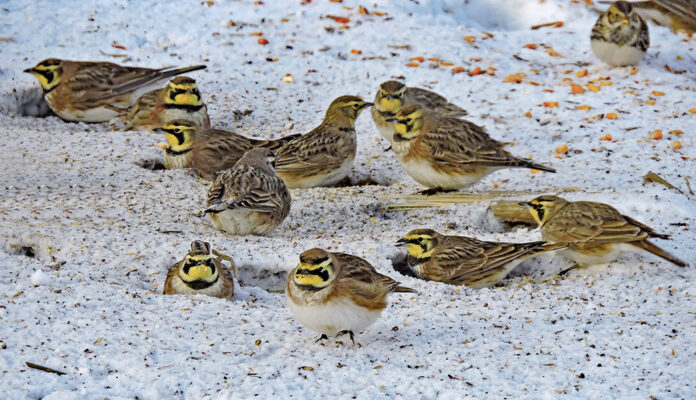Birdwatching in the Rural Fields of Geauga County, Ohio
Birdwatching is a beloved pastime for many nature enthusiasts, and for one retiree in Geauga County, Ohio, it has become a daily ritual. Nestled in the southeast corner of the county, the rural landscape is dominated by farmland, thanks to the presence of the fourth largest Amish settlement in the United States. The Amish community, with their traditional farming practices, has created vast pastures and agricultural fields, primarily growing corn, soybeans, and hay. This unique combination of habitats has made the area a haven for birdwatchers, offering rewarding avian discoveries that never fail to captivate.
One of the daily activities of Amish farmers that attracts a plethora of bird species is the spreading of manure on their fields. As the manure spreader, pulled by a team of draft horses, distributes the fertilizer across the land, it leaves behind a rich mixture of undigested grains, seeds, and straw bedding. This pungent concoction serves as a magnet for birds, drawing them in for a feast and providing birdwatchers with a close-up view of these fascinating creatures.
Among the bird species commonly found at these manure spreads is the horned lark (Eremophila alpestris). This sparrow-sized songbird, native to North America, sports a distinctive plumage of rust, sand, and buff, with a black mask, chest band, and forehead patch on the males. The “horns” for which the bird is named can only be seen up close, adding to its allure. Horned larks prefer open ground with minimal vegetation, making them difficult to spot during the warmer months. However, their melodious song gives away their presence, leading birdwatchers on a delightful treasure hunt through the fields.
During the breeding season, horned larks are solitary creatures, but once the season ends, they gather in large flocks, often mingling with snow buntings and Lapland longspurs. As winter sets in, these flocks become more conspicuous against the snowy backdrop, making them easier to observe. Their jittery behavior, swift flight, and communal feeding habits provide birdwatchers with a dynamic spectacle that is both entertaining and educational.
For avid birdwatchers like Tami Gingrich, the winter months present an opportunity to study these fascinating creatures up close. Using specialized mist nets, Tami captures and bands horned larks, allowing her to gather valuable data on their movements and behavior. Despite their subdued demeanor when captured, these birds exhibit perfect manners and grace upon release, adding to the allure of observing them in their natural habitat.
The presence of horned larks in the rural fields of Geauga County is a testament to the symbiotic relationship between farmers and wildlife. While the Amish farmers benefit from the natural fertilization provided by the birds, the horned larks, in turn, feast on the bounty left behind, ensuring their survival through the harsh winter months. This harmonious coexistence between humans and wildlife underscores the importance of preserving natural habitats and supporting sustainable farming practices.
In conclusion, the rural fields of Geauga County, Ohio, offer a rich tapestry of birdlife and natural wonders for birdwatchers to explore and appreciate. From the charming horned larks to the bustling flocks of winter visitors, each bird species adds a unique element to the vibrant ecosystem of the region. By immersing oneself in the tranquil beauty of the countryside and observing the intricate dance of nature, birdwatchers can gain a deeper appreciation for the delicate balance that sustains life in this rural landscape.




